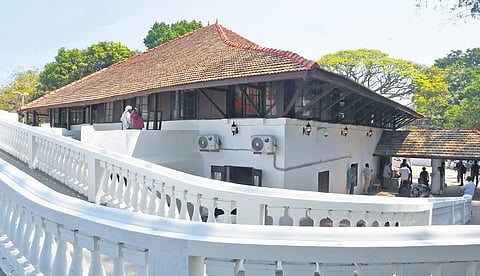

KOCHI: Bastion Bungalow was built by the Dutch in 1667 — five years after they captured Fort Immanuel from the Portuguese. It represents a crucial landmark with regard to Kochi’s colonial and maritime history. As the seat of all three imperial powers who ruled over the island town, the structure weathered many storms until it was declared a protected monument by the State Archaeology Department in the 1990s. Even so, the colossal bungalow which after independence functioned as the official residence of the sub-collector of Fort Kochi, continued to witness a chequered history in recent times.
The long pending plan to convert Bastion Bungalow into a museum was halted in the tracks after Kerala Lalithakala Akademi, which undertook the beautification of the garden surrounding the structure in 2016, faced significant backlash for its unscientific approach. With the shift in the government, the project was entrusted to Keralam Museum with a considerable re-casting of the original plan and intention to present a truly contemporary design and curation.
The freshly renovated museum set up at the cost of `3.58 crore and christened as the ‘district heritage museum’ lends a distinct insight to Kochi’s prominence as mercantile trading centre from ancient to the modern period. “Museums have to be storytelling places and not structures that just house a collection of artifacts. They have to be dynamic, interactive and connect with the visitors. This is what we wanted to achieve with Bastion Bungalow,” said Venu V, the additional chief secretary of Department of Archaeology, Archives and Museums.
With the halls narrating a well-chronicled colonial history of Kochi, the curators have sourced copies of rare documents, maps, photographs and paintings in the possession of the Portuguese, Dutch and British organisations that touch on Kochi.
“The collection has been tracked and sourced from all over Europe and gives a timeline of the world’s interaction with Fort Kochi. Apart from detailing colonial history, one section of the bungalow will house company school paintings commissioned by the imperial masters to depict various communities in Kochi. This will be a living project with ongoing documentation. We have partnered with Sahapedia to produce short documentaries on the 35 odd different communities who live in Kochi,” says Venu. Another significant inclusion is the addition of the extensive archive of indigenous flora of the island charted by the Dutch.